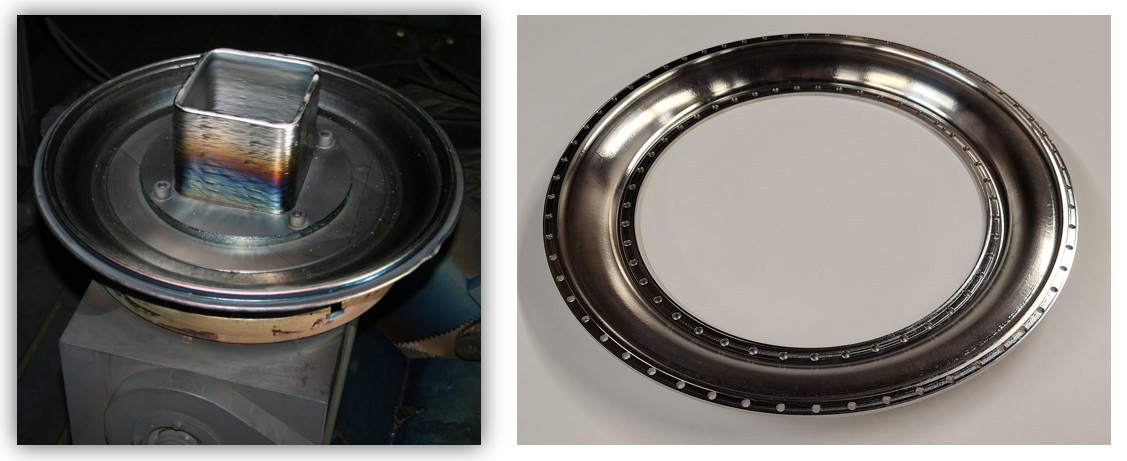


Preform and witness coupon block as printed (left) and after machining (right).
Problem
Legacy military engine systems frequently encounter supply chain challenges in the procurement of sustainment parts. These challenges can come in the form of lost or damaged tooling, supplier de-prioritization due to small lot sizes, or high prices generated by special set-ups. Besides being expensive, these issues can cause delays in returning key equipment to the field. Viable alternative methods of part production are necessary to meet replacement part requirements in a timely and cost-effective manner.
Objective
This project sought to understand if electron beam additive manufacturing (EBAM) could be developed into a viable alternative means of sourcing engine hardware and other ground vehicle sustainment needs, particularly low-volume legacy parts. Each iteration sought to improve the part in terms of the size, quantity, and distribution of process-related defects. The objective was to better understand the capabilities of the EBAM process as it relates to the product requirements of the part being studied, as well as similar part families.
Technical Approach
The project team designed and evaluated an EBAM-based manufacturing process for an Inconel 718 component from the Honeywell AGT1500 gas-turbine engine used on the M1 Abrams family of military battle tanks. Beginning with an initial computer-aided design (CAD) model for the hardware and a definition of the product requirements delivered by Honeywell’s AGT1500 engineering team, the project team procured feedstock, identified machining, heat treat, and hot isostatic pressing (HIP) suppliers, and then proceeded into a series of three development builds utilizing the EBAM
150 system operated by FAMAero. The product of each EBAM build underwent dimensional and non-destructive inspection to characterize the quality of the surface and the bulk material. The data gathered during each build and inspection informed design improvements for the subsequent build. In addition, mechanical test samples accompanied each build for the future evaluation of the mechanical properties of EBAM Inconel 718 against the requirements for the hardware. The Honeywell engineering team used the data and observations of the development process as an initial evaluation of the suitability of EBAM as an alternative manufacturing method for the component under evaluation and other possible future applications.
Accomplishments
This project represented an early-stage evaluation of the Electron Beam Additive Manufacturing (EBAM) DED process for a military engine manufacturing application. Three development builds were executed and inspected for microstructural defects and dimensional accuracy. While some porosity and cracking were observed in the as-deposited state, these issues were resolved through HIP processing. Due to the variance between the predicted and actual layer heights, an iterative approach was required to guarantee that the pre-form captured the entire final part geometry. Further characterization of the material produced will occur separately. Throughout execution, the program team was provided insight into the material science, technical capabilities, processing requirements, and human systems supporting EBAM. At the same time, the EBAM supplier was provided insight into the processing, quality, and documentation requirements for military part production. Areas where further research and development is required in order to enable printing of production parts were identified.
Project Participants
Project Principal

Other Project Participants
- U.S. Army Ground Vehicle Systems Center
- FAMAero Inc.
Public Participants
- U.S. Department of Defense
